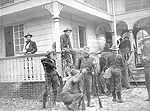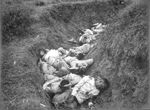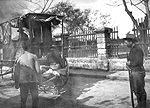Resolved: Advances in Forensic Identification of U.S War Dead
The Philippine Insurrection
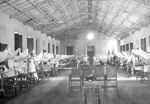 American troops met little resistance from Spain in the Philippines since Commander Dewey's Navy fleet had already forced the surrender of Manila. After the Spanish surrendered completely, the Army built large base hospitals to care for the occupying troops. When Filipino soldiers began fighting the United States for their freedom, these hospitals, and smaller ones built on other islands, housed wounded soldiers. Initially the Filipinos fought using standard western techniques, but soon switched to guerilla warfare. Along with clubs, daggers, and bamboo spears, swords and knives such as these were used. Only 10% of hospitalized soldiers were wounded by Filipinos and instead of combat injuries, American surgeons frequently treated hernias and appendicitis. Injured soldiers were evacuated by litters or mules until they were out of the
American troops met little resistance from Spain in the Philippines since Commander Dewey's Navy fleet had already forced the surrender of Manila. After the Spanish surrendered completely, the Army built large base hospitals to care for the occupying troops. When Filipino soldiers began fighting the United States for their freedom, these hospitals, and smaller ones built on other islands, housed wounded soldiers. Initially the Filipinos fought using standard western techniques, but soon switched to guerilla warfare. Along with clubs, daggers, and bamboo spears, swords and knives such as these were used. Only 10% of hospitalized soldiers were wounded by Filipinos and instead of combat injuries, American surgeons frequently treated hernias and appendicitis. Injured soldiers were evacuated by litters or mules until they were out of the
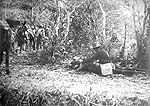 jungle and could be put on an ambulance, train or ship. An ongoing shortage of doctors and the diseases of the rainy season like dysentery and malaria meant that the Army was never at its full fighting strength.
jungle and could be put on an ambulance, train or ship. An ongoing shortage of doctors and the diseases of the rainy season like dysentery and malaria meant that the Army was never at its full fighting strength.



